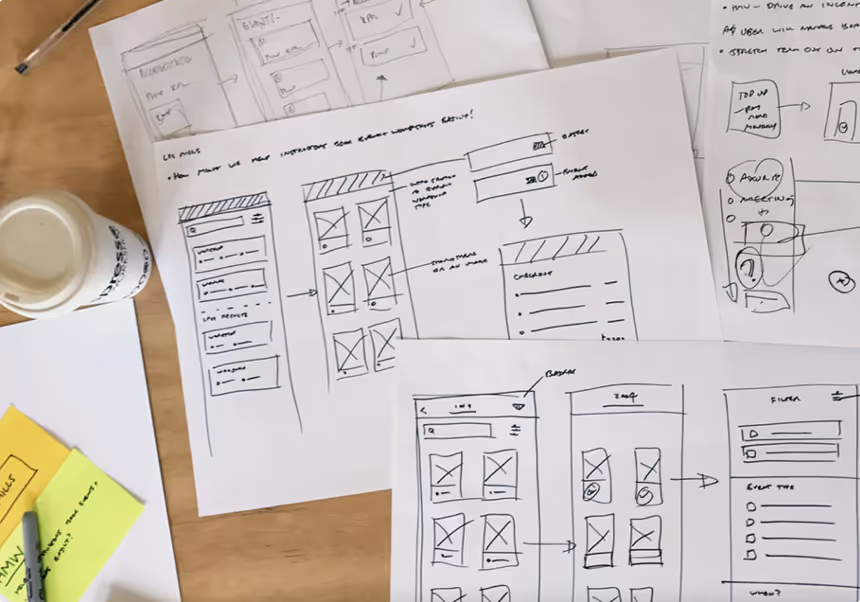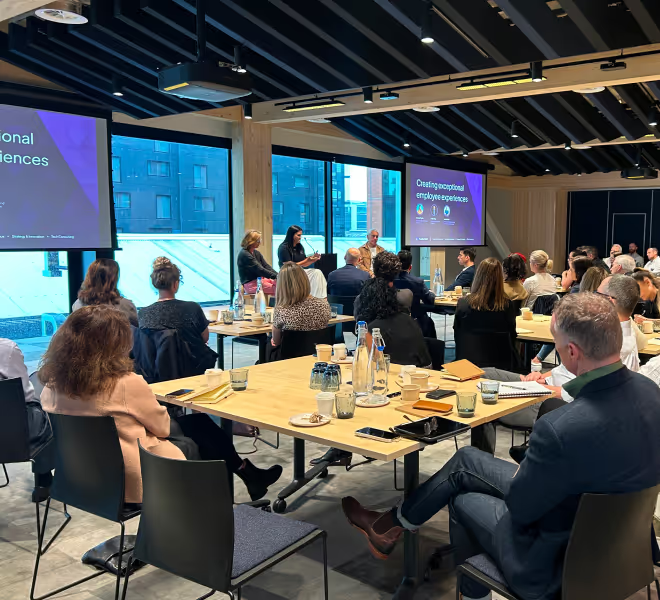As the world comes to grips with the digital revolution and organisations grapple with ever-changing priorities it is critical to get the underlying interactive framework of your digital experiences right to ensure that the experience you invest in remains relevant over time.
In this article, I’ll attempt to explain the philosophy that Purple Shirt has adopted when designing large scale digital experiences where longevity, flexibility and ambiguity are key to their ongoing success.
Think (and design) in frameworks
We define frameworks as the interactive architecture that underpins a digital experience. It's the scaffolding that holds all of the individual components in place, it provides structure, predictability and flexibility but steers clear of the detail. To push this concept even further, you could think of a framework as a series of containers and interactions that can be repurposed providing limitless possibilities within well-defined constraints.
Depending on the nature of the experience you may need to explicitly differentiate the interactive framework based on the job at hand. For example, if you're defining the framework for an unauthenticated content managed site whose purpose is to educate and entice customers then the framework you developed should reflect the types of content that you need. At this point, it is important to differentiate between modular content management and traditional content managed templates. In the former, you define a framework of modular content blocks such as a paragraph with a right aligned image, a title block, a video carousel and a two column paragraph. The advantage of this approach is that, like lego, you combine the various content blocks into a page in any order that you see fit. This modular approach allows you to configure pages based on the story they are telling without being overly constrained to page templates.
Experiences that are more transactional by nature will require a different framework which may end up less defined than that of a content managed framework as you need to define a container, or housing, for transactional experiences to exist in but not the nature of the transaction itself. You'll also need to think about how customers transition between the various components.
“When thinking in frameworks remember that you’re concerned with understanding the type of content and jobs to be done. At this stage, don’t fall foul of trying to define the detail.”
Getting the framework right is critical as it directly impacts the longevity of the experience you’re investing in. It helps avoid costly rework because you’ve done your homework and established the “types” of “things” that you expect the experience to have to cater for. Great frameworks are flexible enough to support new features you haven’t even thought of yet but to get the framework right you need to adopt a generic mindset.
The generic mindset enables you to roll up the types of interactions that your customers or users will have with the experience into generic verb based groups e.g. pay, enquire, find, register or transact. These interaction typologies come from user research where you’ve developed a strong unlying customer experience model, you know your users and the goals they are working towards. This generic mindset can be liberating as it frees you from the paralysis of having to design a large number of individual interactions. To put it bluntly, once you’ve defined how your customers pay in one instance, you don’t need to redefine it in another.
Build and test extensibility
Creating robust future proofed frameworks requires rigour and imagination. Don’t design in isolation, take your draft framework around the business and test how well it performs under different demands, identify and work with those edge cases and test whether the interaction typology you’ve defined works. Make sure you’re pushing stakeholders, and customers when you get the chance, to define where the experience could be two years from now. Be relentless in pulling it apart and reassembling it. This is your opportunity to make sure it works.
But once again, don’t get caught up in too much detail, ensure that you obey the 80/20 rule and don’t make too many exceptions as that leads to unnecessary complexity and increased maintenance overheads. Great frameworks remain generic, enable flexibility and give product managers and stakeholders the confidence that you can support their changing demands.
Remember to think and act strategically. You’ll need to look beyond the tactical initiatives that your product leadership is currently focussed on and dig into the heart of your organisational strategy to make sure the framework is robust enough to support a change in strategic direction. Just because you're focussed on customer acquisition now doesn’t mean that will remain a focus in the future.
And design systems?
It would be remiss in an article of this nature to not address the relationship between design systems and the underlying interactive framework. Simplistically, the interactive framework is populated by design system components. Depending on the maturity of your design system and the stage you’re at in your framework development the design system may need subtle changes to adapt to its new and improved environment.
What, this applies to physical experiences too?
Absolutely. The framework mindset applies to not only digital but architectural experiences too. Developing the underlying framework of a physical experience sets a frame of reference which leads to consistent and conscious decision making. It makes components of the experience reusable in other areas and ensures that in the first instance, you're focussed on the activities that the space needs to support not the specifics of how it feels or what it looks like.
Sound relevant to you?
Get in touch and we can talk you through the process in detail including concrete examples of the benefits of getting it right, protecting your investment and why taking a practical approach means you can adopt the framework mindset sooner rather than later.






